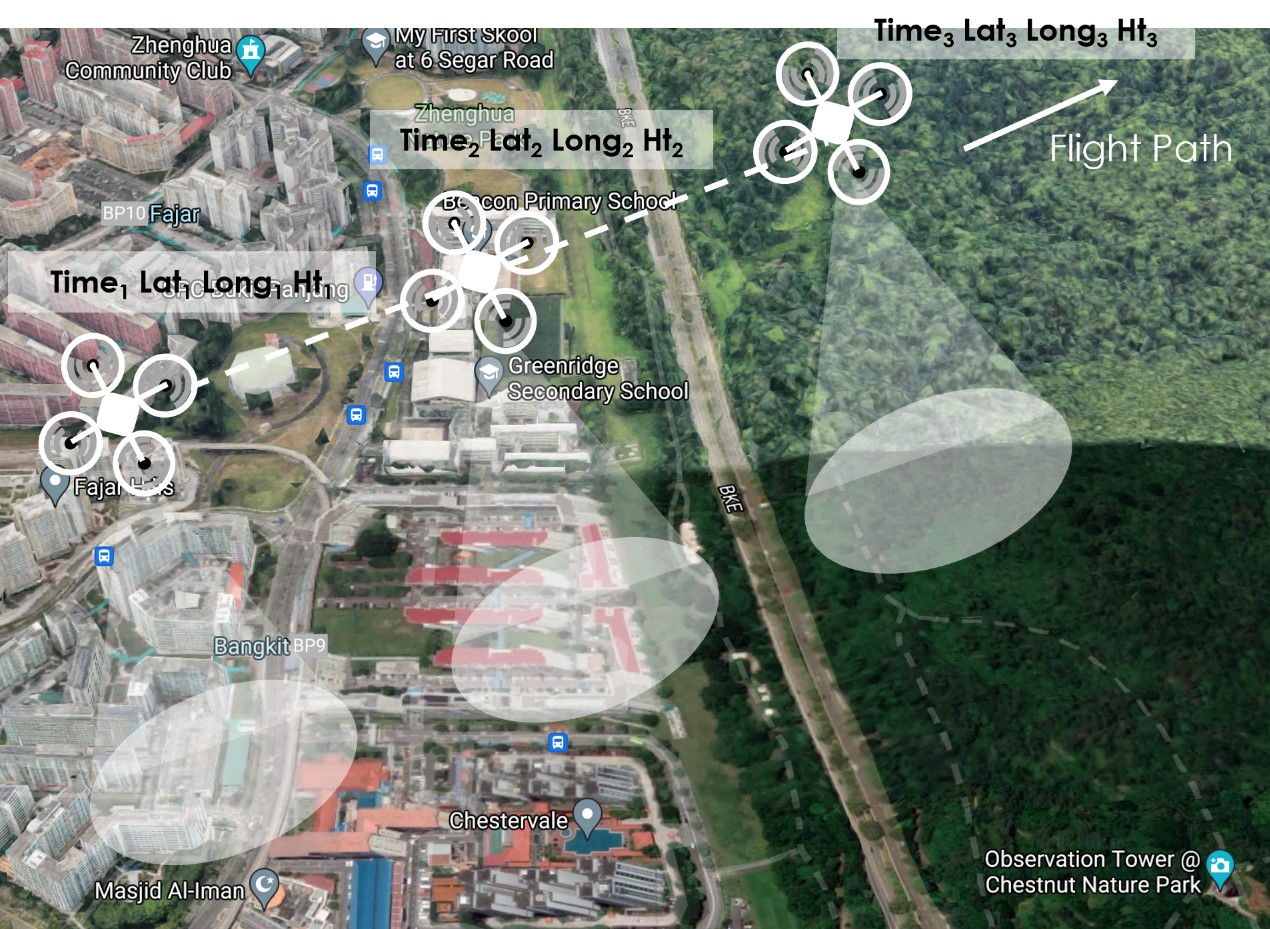 GPS-independent drone flight path from Bukit Panjang to Chestnut Nature Park. (Photo: HTX)
GPS-independent drone flight path from Bukit Panjang to Chestnut Nature Park. (Photo: HTX)
The evolution of drone or Unmanned Aerial System (UAS) technology has been rapidly accelerating in recent months, especially with the extensive use of militarised drones in the Ukraine War and other conflict zones, and drones have been transformed into a major challenge for public safety. Public safety agencies around the world, including HTX, have been hard at work developing Counter-UAS (C-UAS) technologies to deal with this increasingly dangerous challenge.
With our severe radio spectrum congestion, commercially available C-UAS tools in Singapore may suffer from an overwhelming number of false detections and become unusable. The innovative C-UAS capabilities HTX’s Robotics, Automation and Unmanned Systems (RAUS) Centre of Expertise (CoE) has been developing for the Home Team address these challenges of our highly urbanised operational environment.
One such solution is the Rapid Deployable C-UAS System (RDS), which integrates multiple detection sensors with smart countermeasures. RDS is a lightweight, autonomous, and low-cost platform which is specifically designed for portability. The modular and scalable system can be quickly set up for temporary or permanent installations; and is also configurable as a single system deployment or networked with other systems that are deployed on site. RDS incorporates the most advanced radar with urban de-cluttering functionalities; a drone detection, identification, and tracking system; as well as drone jamming capabilities.
Another C-UAS solution that RAUS CoE is developing is the first of its kind in the world – a drone hunter that is able to operate without the need for Global Positioning System (GPS) navigation. This capability has become increasingly urgent in recent months with the increasing use of GPS spoofing and jamming in global warzones in Ukraine and elsewhere. There is currently no similar C-UAS solution on the market that can operate effectively and reliably in GPS-degraded or GPS-denied environments.
This GPS-independent drone hunter is a high-speed interceptor that can rapidly pursue and capture rogue drones in GPS-denied environments, then jettison these captured drones at designated “safe” zones for safe payload removal and disposal. How does this drone hunter navigate without GPS? It navigates with ground radar which provides guidance commands to the hunter to detect, pursue and capture rogue drones.
Aside from C-UAS solutions, RAUS CoE has also been building up the Home Team’s drone capabilities. One such capability is NavSight – a GPS-independent navigation system which allows Home Team drones to operate in GPS-degraded or GPS-denied environments.
Drones equipped with the NavSight system have their routes pre-programmed into them before their flights. During their operations, they use their downward-looking cameras to visualise their surroundings in real-time and calculate their positions by comparing their surroundings with their pre-loaded routes. Drones equipped with NavSight are also able to track ground and aerial objects and identify and avoid obstacles.
In early April 2024, HTX presented these UAS and C-UAS technologies at the Milipol Asia-Pacific – TechX Summit exhibition at the Marina Bay Sands convention centre.

